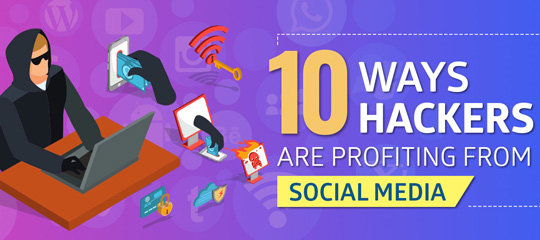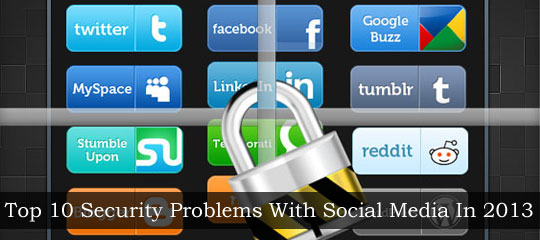In the past few years, social media has become an important part of our life. In 2020, the number of people using social media was 3.6 billion which is estimated to reach 4.41 billion by 2025. Apart from being the link pin to the world, it has also become a breeding ground for cybercriminals.
Over the years, social media scams have become quite prevalent across Facebook, Twitter, LinkedIn as well as YouTube. One in four people reports that they have lost money in social media fraud in 2021 with an ad, post or message.
Due to the possibility of covering their footsteps easily on social media, the fraudsters commit various types of scams that impacts the confidential information of the users. Further, they use this information to commit cybercrime at a greater level.
Here are some of the most common social media scams, which cause not only information data but also huge monetary losses.
Four Types Of Social Media Scams
1. Ponzi Schemes
This is a type of investment scam where the fraudsters promise “too good to be true” returns against an investment. The fraud masterminds make the scheme so believable and enticing that even the most cautious individuals fall prey to the bait. In these Ponzi schemes, the organizers communicate to the investors that their money will be invested in return for profits at no risk.
However, the fraudsters don’t plan to invest any money. Their foremost intention is to pay off the early investors to gain their trust and make the scheme believable. Due to this, people end up investing their life savings and selling their property to make quick money.
2. Online Shopping Fraud
Followed by the investment scam, another very common social media scam is the online shopping fraud. On average, among the reports of money lost in social media scam online shopping was 45% in 2021. Nearly 70% of people reported cases where they placed an order after seeing an ad but never received the merchandise. Some people also reported instances where the ads impersonated real online retailers and redirected them to lookalike websites.
3. Social Media Phishing
This is a type of social media scam where the scammers create a fake social media post, website, or profile to convince people to share confidential information. The scam masterminds impersonate a real company’s name or logo and dupe the visitors to provide sensitive information like credit card numbers, SSN, etc.
Once the visitor provides the information, the scammers can access the bank account, steal your identity, or make fraudulent purchases. Another instance is where the scammers take over an existing account with data breaching, phishing, or malware. After this, they use the hacked profile to ask for money from common connections or promote their fraudulent site.
[See related article and Infographic: 10 Ways Hackers Are Profiting From Social Media]
4. Job Scams
In job scams, the scammers create a post or run an ad on social media that promises a high-paying job in return for a small “advance fee” to get the job that doesn’t exist. The fraud employer also sends a new employee a fake cheque before the joining date and asks them to send money back to pay for training or supplies. And after this when the prospect deposits the cheque, they are considered responsible for the money sent to the scammer. This also heavily impacts the brand reputation of a legitimate company as the fraudsters impersonate them to commit the fraud.
Three Ways How To Stay Safe From Social Media Scams
1. Be More Vigilant
To stay safe from cybercriminals on social media, be cautious when accepting requests. The hackers can appear as your trusted person, co-worker, or acquaintance and can try to fool you into sharing confidential information or asking to send money. Many scammers also pose themselves as legitimate companies and convince people to share account details.
2. Use Two-Way Authentication
Every social media platform provides two-factor authentication to ensure the user’s account details are secured. This acts as an extra layer of security that ensures that the person accessing the account is genuine. With this feature, the users can link their account with their phone number to verify a code sent via email or text.
3. Avoid All Suspicious Links
When online, the cardinal rule is to be cautious where you’re clicking on the web. Malicious links are always the source of viruses, ransomware, or identity theft. These links can lead trigger a malware download or redirect to a fake website that can steal your login details which can be misused for fraudulent activities.
Conclusion
Social media scams not only compromise user information but also impact the brand reputation. The scammers wait for you to put your guard down and lure you towards false and shiny deals and promises. When using social media, it is important to stay cautious and not get lured by fake offers and “too good to be true” deals. With the growing usage of social media, it is important to not only enjoy the global reach but also stay protected from the vicious trap of scams and take appropriate actions at the right time.
[Blast from the past: See what were the Top 10 Social Media Security Problems 10 years ago]
[Main image: Wirestock; other images are credited in their respective articles.]

Priyanka is a proficient writer holding experience of 5 years in writing for multiple digital platforms. She specializes in writing well-researched blogs for industries like Travel, Digital Marketing, Ad Tech and MarTech. Currently Priyanka is working as a Senior Content writer with mFilterIt.


